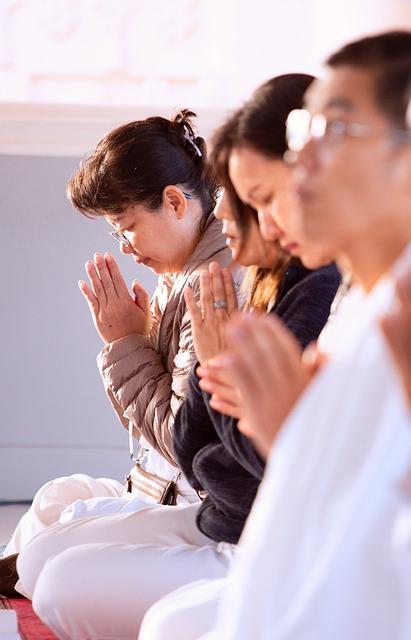In a world that continues to redefine societal norms, discussions revolving around sexual freedom have become more prevalent than ever. The concept of sexual liberation is often romanticized, celebrated, and undoubtedly holds unique personal interpretations for every individual. However, to truly comprehend the significance and implications of sexual freedom in our lives, it becomes crucial to delve deeper into its meaning and explore the various dimensions that shape our fantasies of liberty in the realm of human sexuality. This article aims to unravel the intriguing intricacies of these “freedom fantasies” by examining their underlying implications and shedding light on the multifaceted nature of sexual freedom.
Different Experiences, Different Meanings of Sexual Freedom
Sexual freedom can hold different meanings for different individuals, reflecting the unique experiences and perspectives they bring to the discussion. While for some, sexual freedom may entail the ability to express their desires and preferences without fear of judgment or societal restrictions, for others, it might mean the freedom to choose whether or not to engage in sexual activities altogether.
For those who have faced oppressive norms and societal expectations, sexual freedom may represent a powerful tool for self-liberation and empowerment. It allows individuals to explore their own identities, preferences, and boundaries, providing a safe space to challenge and redefine traditional notions of sexuality. This freedom allows for the breaking down of societal taboos, facilitating dialogue and understanding among diverse communities. It can pave the way for inclusive conversations about consent, pleasure, and healthy relationships, contributing to a more sex-positive culture.
Understanding the Inner Desires: Unraveling Individual Sexual Freedom
Exploring and embracing our individual sexual desires is an essential aspect of personal growth and fulfillment. It allows us to understand and appreciate the diverse range of human experiences, unburdened by societal judgments or restrictions. Here, we delve into the complexities of sexual freedom, igniting a conversation that empowers and celebrates the uniqueness of each individual’s journey.
In our pursuit of understanding sexual freedom, it is crucial to acknowledge that it manifests differently for every person. Here are some key elements to consider:
- Variety of preferences: Sexual freedom encompasses a vast spectrum of desires, inclinations, and orientations. It recognizes that no two individuals are the same, and embraces the beauty of this diversity.
- Beyond societal norms: Breaking free from societal norms around sexuality is an integral part of individual sexual freedom. It grants us the space to explore, express, and discover without shame or fear.
- Consent and communication: A cornerstone of sexual freedom lies in fostering a culture of consent and open communication. This ensures that all parties involved are comfortable, safe, and able to freely express their desires.
- Personal growth and empowerment: Striving for sexual freedom is an empowering journey of self-discovery that promotes personal growth, self-acceptance, and a sense of authenticity.
Remember, understanding and embracing our inner desires is a deeply personal and ongoing process that requires empathy, self-reflection, and a commitment to understanding the diverse experiences of others. By unraveling the layers of sexual freedom, we can fully appreciate the beauty and complexity of human sexuality in all its forms.
Breaking Societal Constraints: Embracing Sexual Liberation
Sexual liberation is a powerful movement that challenges societal norms and encourages individuals to explore their desires and preferences freely. By breaking away from traditional constraints, people are able to embrace their sexuality as an integral part of their identity, fostering a healthier and more fulfilling sense of self.
One of the key aspects of sexual liberation is the acceptance of diverse sexual orientations and identities. People are realizing the importance of recognizing and respecting the full spectrum of sexual orientations, such as homosexuality, bisexuality, and asexuality. This newfound acceptance has opened doors for individuals to express themselves authentically and seek meaningful connections without fear of judgment or discrimination.
Embracing sexual liberation also means challenging gender stereotypes and embracing the fluidity of gender identity. Breaking free from the limitations of society’s expectations allows individuals to explore and express their true selves, whether they identify as male, female, non-binary, or any other gender identity. It encourages open conversations about gender roles, supporting personal growth and empowering individuals to create their own unique paths to self-expression.
Exploring Boundaries: Navigating Consent and Empowerment
When it comes to relationships and personal interactions, it’s crucial to establish clear boundaries and ensure that consent and empowerment are at the forefront. Navigating these aspects can create a healthier and more respectful environment for everyone involved. Here are some key points to consider:
- Open Communication: Establish an environment where open and honest communication is encouraged. Encourage discussions about individual boundaries, desires, and comfort levels. This allows for a mutual understanding and respect.
- Active Consent: Consent is an ongoing process and should be given enthusiastically and explicitly. Teach and practice the concept of enthusiastic consent, where all parties involved give clear and explicit consent at every step of the interaction.
- Empowering Choices: Empower individuals to express their boundaries without fear of judgment or consequences. Encourage them to make choices that align with their values and desires, ensuring that their decisions are respected by others.
By exploring and understanding boundaries, we can foster a culture where consent and empowerment are integral components of every interaction. It promotes respect, autonomy, and healthier relationships in all areas of life, strengthening connections between individuals and fostering a sense of safety and trust.
From Education to Empowerment: Promoting Safer Practices and Open Dialogue
Education serves as the foundation for empowering individuals and fostering safer practices in our society. By equipping people with knowledge and understanding, we can encourage open dialogue and create a culture of safety and empowerment. Through various educational initiatives, we can address critical issues and promote a positive change within our communities.
One effective way to promote safer practices is by highlighting the importance of physical and mental well-being. By educating individuals about the benefits of self-care, mindfulness, and stress management, we can empower them to prioritize their health. Moreover, fostering open dialogue on topics such as consent, healthy relationships, and mental health can help break down stigmas and create a supportive environment where people feel comfortable seeking help and support when needed.
- Mental Health: Encourage discussions on mental health, destigmatize seeking help, and raise awareness about available resources.
- Physical Well-being: Educate on the importance of regular exercise, proper nutrition, and the benefits of maintaining a healthy lifestyle.
- Healthy Relationships: Promote conversations about consent, healthy communication, and identifying signs of unhealthy relationships.
- Personal Safety: Provide information on personal safety measures, self-defense techniques, and awareness of potential risks.
- Technology Use: Raise awareness about online safety, cyberbullying, and responsible use of digital platforms.
By combining education with open dialogue, we can create a society that is empowered to make informed decisions, prioritize well-being, and cultivate safer practices. Let’s work together to build an environment where everyone feels supported, respected, and equipped to face the challenges of our ever-evolving world.
Frequently Asked Questions
Q: What does “sexual freedom” mean?
A: Sexual freedom refers to the ability to explore, express, and engage in consensual sexual activities without judgment, shame, or societal restrictions.
Q: Why is sexual freedom important?
A: Sexual freedom is essential for promoting self-expression, individual autonomy, and the overall well-being of individuals. It allows individuals to embrace their own desires and identities without fear or societal pressures.
Q: How does sexual freedom impact relationships?
A: Sexual freedom fosters healthier relationships by promoting open communication, consent, and mutual respect between partners. It encourages the exploration of desires, enhancing intimacy and trust.
Q: Can sexual freedom have an impact on mental health?
A: Absolutely. Embracing sexual freedom can positively impact mental health by reducing anxiety, boosting self-esteem, and promoting overall happiness and fulfillment. It allows individuals to embrace their authentic selves.
Q: Does sexual freedom mean promiscuity?
A: No, sexual freedom does not equate to promiscuity. It encompasses the right to choose one’s partners, explore various sexual activities, and engage in consensual relationships without societal judgment or stigma.
Q: Is there a limit to sexual freedom?
A: Sexual freedom is bound by the principles of consent and respect. It is important to consider the boundaries and desires of all involved parties to ensure a safe and consensual experience.
Q: Can sexual freedom coexist with committed relationships?
A: Absolutely. Sexual freedom can coexist with committed relationships when open and honest communication is maintained. It allows partners to explore new experiences, fantasies, or non-traditional relationship structures, always with the consent and agreement of all parties involved.
Q: How can we promote sexual freedom in society?
A: Promoting sexual education, dismantling societal taboos, and advocating for equal rights and acceptance for all sexual orientations and identities are key steps towards fostering sexual freedom in society.
Q: Are there any cultural variations regarding sexual freedom?
A: Yes, cultural norms and values around sexuality can greatly vary across societies. Some cultures may embrace sexual freedom more openly, while others may have more conservative attitudes. It is important to respect and understand different cultural perspectives on sexual freedom.
Q: What can individuals do to embrace sexual freedom?
A: Individuals can start by educating themselves about their own desires, boundaries, and practicing open and honest communication with their partners. They can also seek support from trusted friends, healthcare providers, or therapists who specialize in sexual health. In conclusion, sexual freedom holds different meanings for different individuals, encompassing a broad range of desires and expressions. It is a deeply personal and subjective concept that is shaped by societal, cultural, and personal factors. Embracing sexual freedom requires respect, consent, and open-mindedness, ensuring the autonomy and well-being of all individuals involved.






